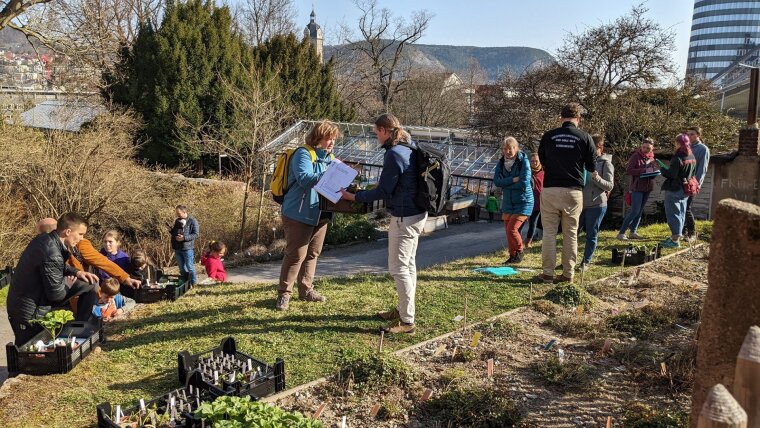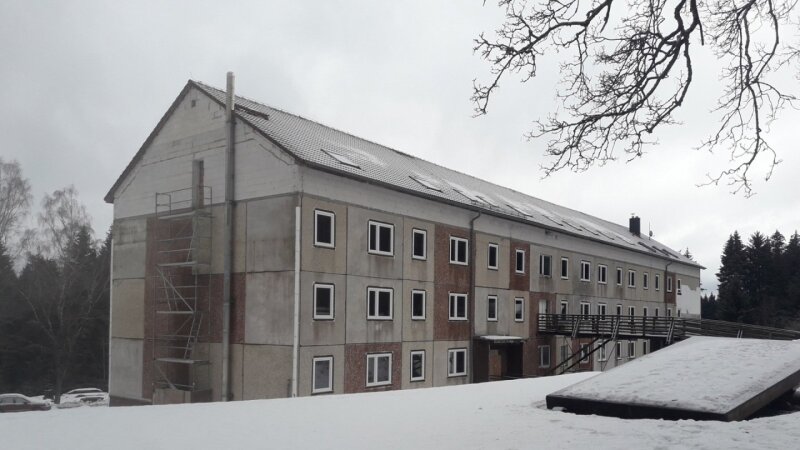
A growing number of researchers are including citizens in their scientific work. However, they are not just called upon as test subjects; »citizen science« is about conducting research together. The University of Jena also invites members of the public to participate in such projects. We present two examples here.
By Vivien Busse
The Oxford English Dictionary defines »citizen science« as the »collection and analysis of data relating to the natural world by members of the general public«. They often work together or under the guidance of professional scientists or scientific institutions. In other words, it is lay people who help to collect, research, and evaluate research data in »citizen science«.
Observing plants from the outskirts to the city centre
The general public is currently helping scientists on the »PflanzeKlimaKultur« project. The aim of the cooperative project, in which the universities of Jena, Halle and Leipzig, among others, are participating, is to observe the phenology (i.e., seasonal development) of native plants. This is because plants reflect climatic changes; for example, their life cycle is heavily influenced by temperature.
The project team in Jena called upon citizens to participate by contacting nature conservation organisations, allotment associations and schools, and by posting an appeal in the local press. When the project was launched in March, the participants received plant packages and planted them in their own flower beds. They have since been observing their plants – and they will be doing so for two years.
The phenological stages of the plants (e.g., budding, first flowering and leaf discolouration) are documented every week. The data is collected in a database via an app. The researchers also provided the participants with instructions for collecting and documenting the required observations and data. Alongside the manual assessment, sensors were installed in all flower beds to measure the air and soil temperature and soil moisture.
The mixture of private and public flower beds in Jena is spread throughout the city – from the outskirts to the city centre. Two model flower beds are located in the Botanical Garden of the University of Jena and at the »forum natura« discovery centre at Schottplatz. The former two are looked after by the Plant Biodiversity Group within the Institute of Ecology and Evolution at the University of Jena; the flower beds at the »forum natura« discovery centre are cared for by the Forestry Department within Jena’s municipal services.
The model plants are insect-friendly wild plants that are easy to cultivate such as wild tulips, crown vetch, wild sage, and winter aconite. »We have a lot of passionate and committed citizens on board – and a number of schools are also involved in the project«, explains Prof. Dr Christine Römermann, who is heading the Jena section of the project. »They want to contribute to climate impact research.«. Environmental education also plays a role, says Römermann. For example, one school has created two flower beds with very different environmental conditions to observe differences on a small scale.
As the participants collect data, they exchange information with researchers as part of citizen dialogues and develop concepts for nature conservation and climate change adaptation. The researchers want to use the data collected to record the impact of the microclimate on the development of plants, which is particularly strong in cities.
They are also using the data in the »PhenObs« research project, which documents the phenology of over 200 plants in botanical gardens around the world. A comparative evaluation will provide information on the influence of the macroclimate compared to the microclimate.
Historical perspectives
Master’s student Emilia Henkel is currently planning another form of cooperation between science and the general public. As the student of 20th century history and politics was writing her master’s thesis, she wondered who was actually entitled to write down or tell historical stories. »How is a story influenced by the personal biography of the narrator or researcher? What do we see in sources and what remains hidden to us but is noticed by others?« Using the example of the first accommodation for asylum seekers in Thuringia near Tambach-Dietharz, she wants to get to the bottom of these questions together with citizens.
»I’m particularly interested in how the events of the time are viewed differently by those affected: the former residents of the refugee centre and the neighbouring town; people who have had their own experience of fleeing and living in mass accommodation at other times and in other places; historians; and people who are not experts«, says the student. In order to get to her interviewees, she uses her contacts from previous work and from her research. Emilia Henkel wants to recruit participants for her project primarily through associations such as Camp Impact e. V., which hosts Christian camps for children in the former refugee centre.
In autumn, she will also invite young people from a migrant background and former residents of the refugee centre. Emilia Henkel hopes that engaging with the historical site will lead to exciting conversations that transcend generations.
The aim of the project is to find out how our personal experiences and backgrounds affect the way we interpret and understand historical sources. To do this, she will ask the participating citizens to interpret various text sources. The sources, which include a protest letter from former residents of the refugee centre and a local newspaper article, will be placed in the historical context of the refugee centre so that the project participants can find out when and under what circumstances the texts were written.
Henkel and her team will give the respondents a few questions to encourage them to think about the content and interpret the sources. The questions will be used to generate a discussion in joint workshops.
Anyone who is unable to attend the workshops will be able to access a website to view the sources, background information and interpretations collected over the course of the project. There, the comment function makes it possible to add new perspectives, even from home. » Through the website, I would like to invite the public to reflect on the context in which historical knowledge is created, which is shaped by personal experiences, and also to look for the gaps. The refugee centre near Tambach-Dietharz is an excellent example to question what is lost when the story is written by a white, German student and not by a person with refugee experience.«
The »New House« near Tambach-Dietharz served as the first accommodation for asylum seekers in Thuringia between 1991 and 2003.
Image: Emilia Henkel